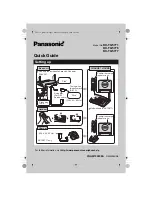
Setting Up Cisco Unified IP Phones using SIP
Where to Go Next
120
Cisco Unified SCCP and SIP SRST System Administrator Guide
OL-13143-04
Where to Go Next
The next step is configuring incoming and outgoing calls for Cisco Unified SRST. For more information,
see the
“Configuring Call Handling” section on page 123
.
For additional information, see the
“Additional References” section on page 26
in the
“Cisco Unified
SCCP and SIP SRST Feature Overview”
chapter.
RTP dynamic payload type values: NTE = 101
Cisco: NSE=100, fax=96, fax-ack=97, dtmf=121,
fax-relay=122
CAS=123, ClearChan=125, PCM switch over
u-law=0,A-law=8
RTP comfort noise payload type = 19
fax rate = voice, payload size = 20 bytes
fax protocol = system
fax-relay ecm enable
fax NSF = 0xAD0051 (default)
codec = g729r8, payload size = 20 bytes,
Media Setting = flow-through (global)
Expect factor = 0, Icpif = 20,
Playout Mode is set to adaptive,
Initial 60 ms, Max 300 ms
Playout-delay Minimum mode is set to default, value
40 ms
Fax nominal 300 ms
Max Redirects = 1, signaling-type = cas,
VAD = enabled, Poor QOV Trap = disabled,
Source Interface = NONE
voice class sip url = system,
voice class sip rel1xx = system,
monitor probe method: icmp-ping ip address:
10.2.161.187,
Monitored destination reachable
voice class perm tag = `'
Time elapsed since last clearing of voice call
statistics never
Connect Time = 0, Charged Units = 0,
Successful Calls = 0, Failed Calls = 0, Incomplete
Calls = 0
Accepted Calls = 0, Refused Calls = 0,
Last Disconnect Cause is "",
Last Disconnect Text is "",
Last Setup Time = 0.
Command or Action
Purpose
















































